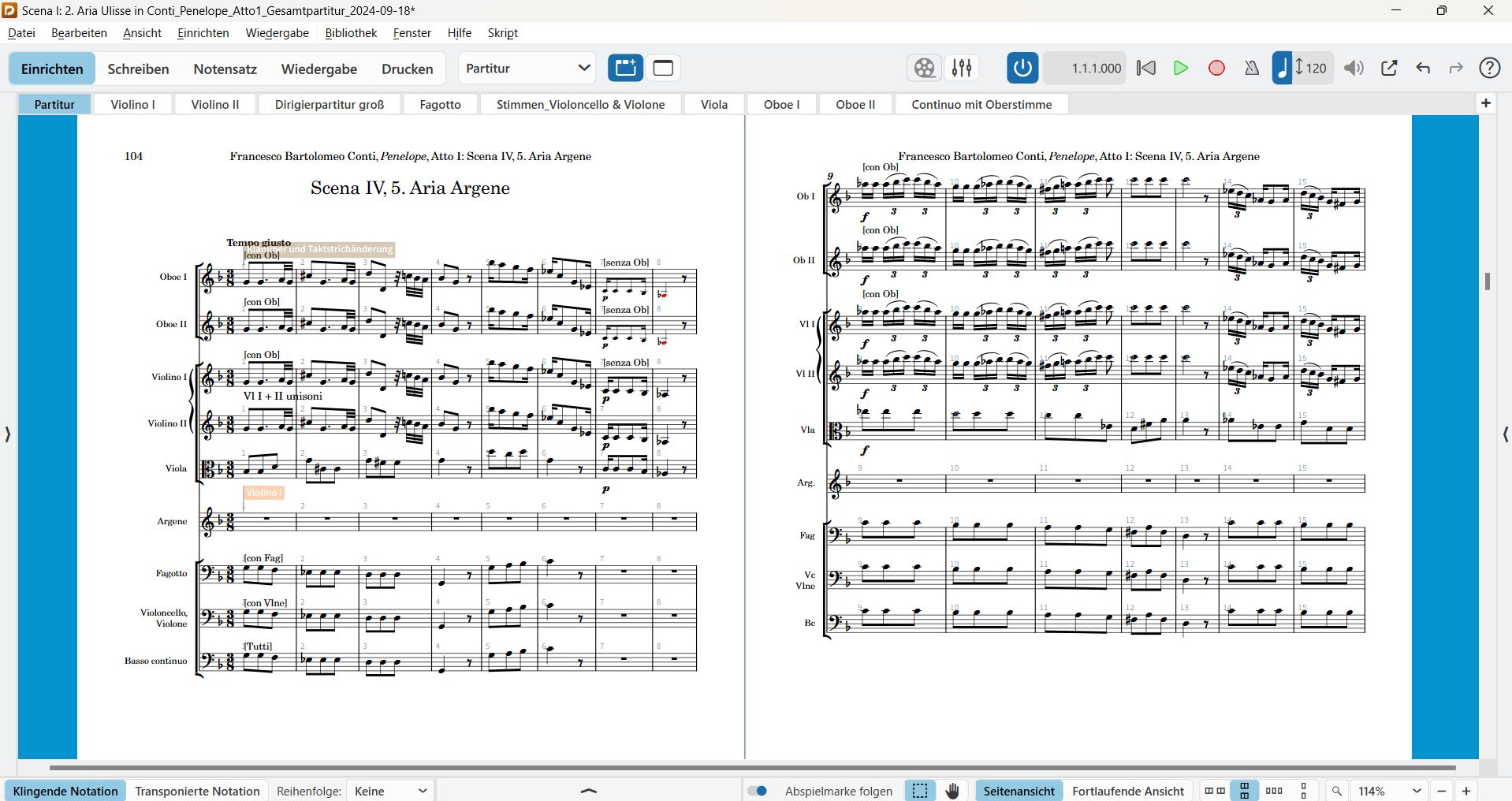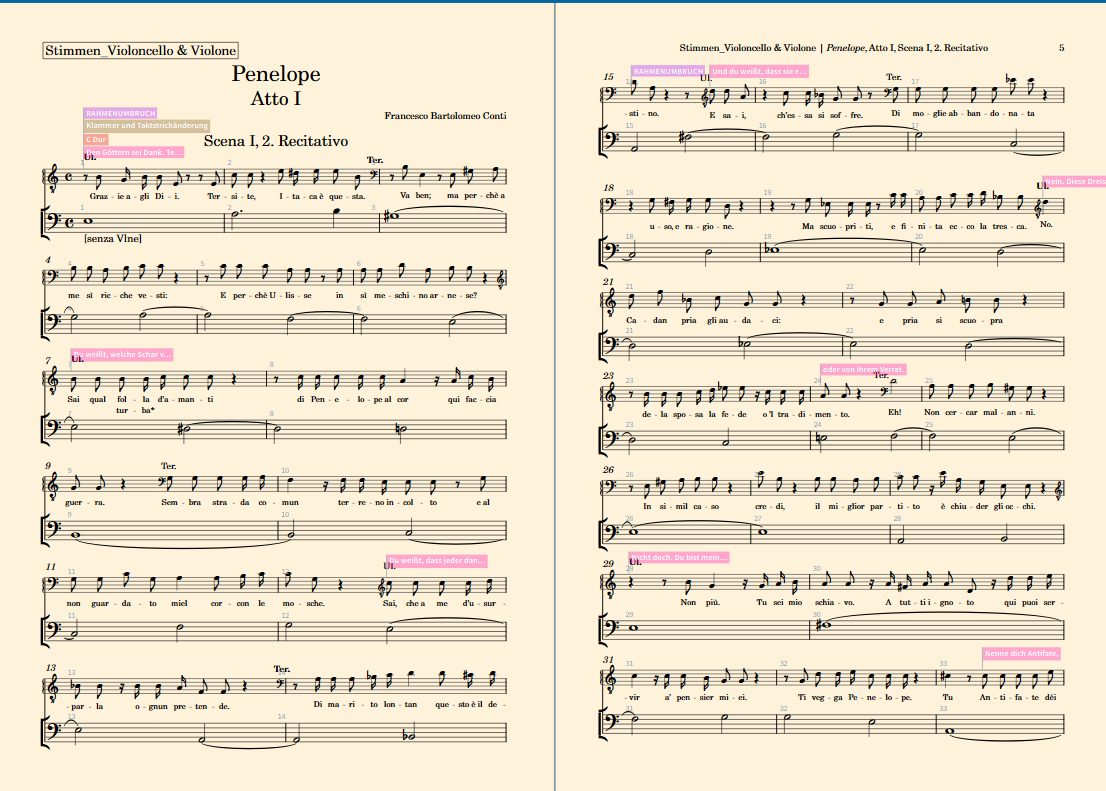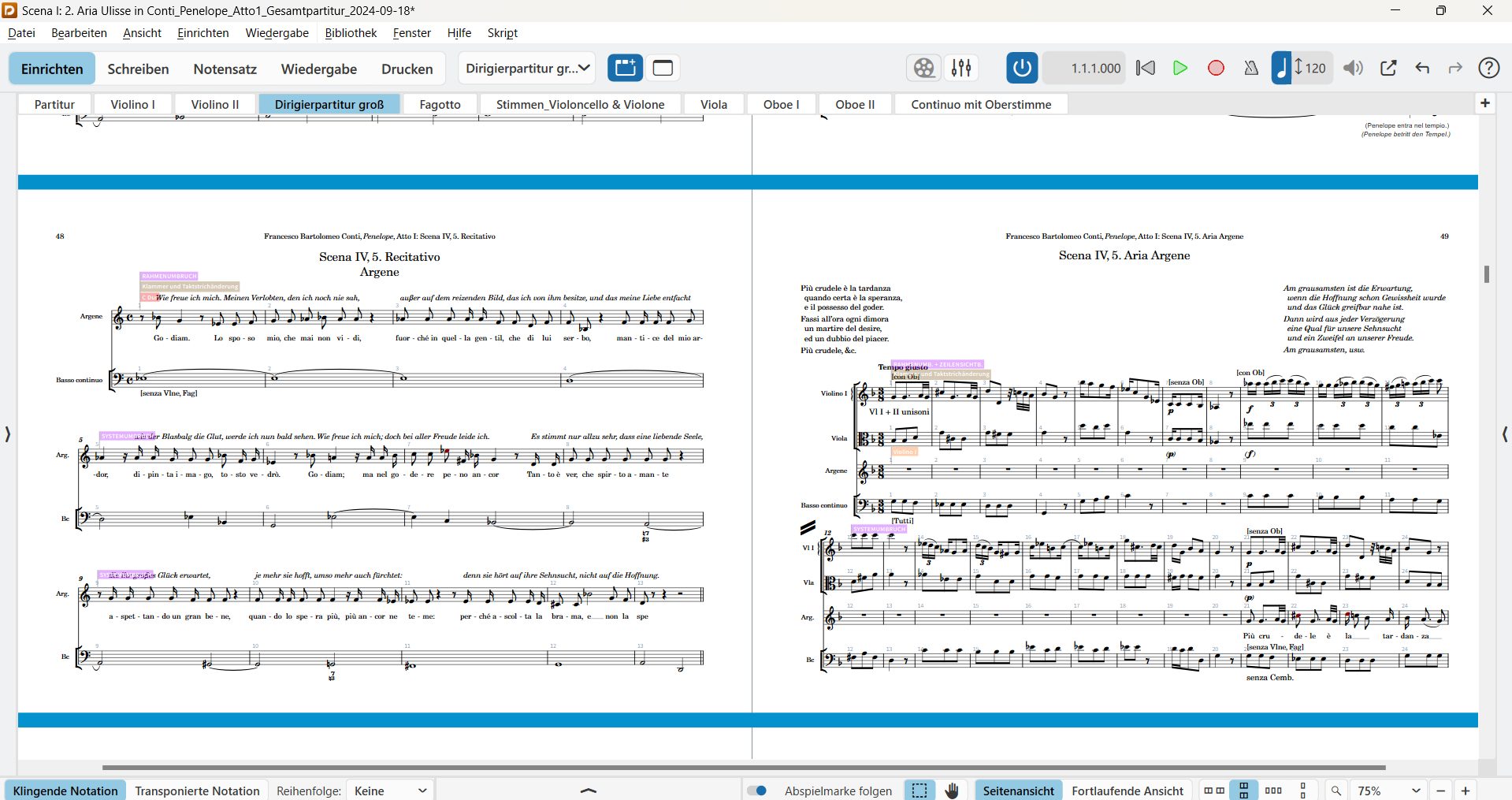Edition
Sources and edition
As is the case for most of his operas, Conti's autograph score is not preserved, because it merely served as a source for the copyists and was then returned to the composer. Only the copies of the score and parts were kept in the holdings of the Viennese court chapel, whereby duplicates and pure reinforcing parts were discarded (separated and destroyed) over time for reasons of storage space, as these were not essential for the work's substance and therefore not needed for archiving.
The basis for the edition are the two score copies from the holdings of the court chapel, now kept in the music collection of the Austrian National Library, A-Wn Mus.Hs. 17110/1–3 and A-Wn Mus.Hs. 17226/1–3, as well as the parts (A-Wn Mus.Hs. 17227/1–4) for violin I, violin II, viola and violoncello.
The edition was prepared in the winter semester 2023/24 and in the summer semester 2024 as part of university courses and an Eramus+ workshop with students from GMPU Klagenfurt in collaboration with the Academy of Music, Zagreb.
The synopsis of the libretto and the translation into German were made by Alfred and Christine Noe, Vienna.
Editors:
GMPU Klagenfurt: Theresa Aichner (student assistant), Laura Espinoza García, Eva Grujić, Jiwoo Kim, Sanja Kostić, Viktor Pelepchuk, Sabrina Schasche, Kristina Tominec, Marko Veljković, Stephanie Weitensfelder. – Ramona Hocker, Klaus Kuchling.
Academy of Music, Zagreb: Lovro Bakula, Adela Balić, Lora Breški, Magda Galić, Lovro Ivić, Sarah Kraljić, Dorian Posavac, Gabriela Šlegl. – Ana Čizmić Grbić, Ivan Ćurković.
The integration into university courses, the time frame of two semesters and the intention of the edition as a practical edition as part of a student project determined the methodological approach. A detailed collation and source evaluation could therefore not take place before the start of the editing work; A-Wn Mus.Hs 17110 was selected as the main source for the edition on the basis of comparisons, especially of the performance instructions in the two scores. In the course of editing and corrections, deviations and important additions from the score A-Wn Mus.Hs. 17226 and the string parts were included into the edition and documented in the Critical Report.
The aim was to produce a historical-critical edition that is suitable for practical use with students. Care was taken, especially in the parts, to ensure there were clear solutions where there was discrepancies between the sources. The parts also contain (analogous) additions of slurs and dynamic indications where none were given. In the conducting score, additions and changes are only marked where there is no clear solution or where the decision will be found during the rehearsals. Canceled preliminary versions of two arias have been included in an appendix, which also contains synoptic excerpts from the digital copy for some passages in order to discuss particular questions of articulation.
The notation has been modernized and standardized for the edition, particularly the clefs, accidentals and the underlay of the vocal texts, which are not precisely coordinated with the musical notation in the sources. In addition, a translation in modern German (Alfred and Christine Noe, Vienna) was integrated into the vocal and instrumental music materials. The figuration of the continuo part was worked out by Giulia Nuti, professor for harpsichord and historical performance practice at the GMPU.
Editorial work
First, the parts were transcribed from the original score. Reinforcing colla parte voices are added and generated from the corresponding primary voices. This results in an overall score that contains all the parts involved. This procedure is necessary in order to create a single part for each of these instruments.

During the university editing courses, we initially worked with individual files for each number. At the end of the transcription work, these were merged into three large files – one for each act – in order to obtain a continuous flow in the individual layouts. In the cello/bass part, the vocal part has been added to the recitatives in small type for better orientation; the part for the harpsichord also contains the highest voice in both recitatives and arias. With all instrumental parts, it is important to make sure that they are easy to read and that page turns are placed in appropriate places, which can be a challenge in some movements which are very densely composed; the operation also involves some manual readjustment of the staves.

The conducting score is similar to the original score, and only represents the written parts, i.e. strings, voice part, one bass line. The participation of the winds and the pausing of the double bass are indicated by words: This makes the score clearer and more staves can be placed on one page, meaning less frequent page turning. Like the original, our conducting score is also in landscape format, as longer passages – especially coloraturas – can be displayed in one line and this layout correlates perfectly with the texture of the music: It is not without reason that landscape format for the score and portrait format for the parts can already be found in the original materials from the 18th century. The conductor's score can be used both in B4 format (conductor) and slightly reduced to A4 for the singers. A separate vocal score has not been created, as the instrumentation is very compact, the musical dialogues between the parts are best understood in the score and because the materials are only used for rehearsals.





